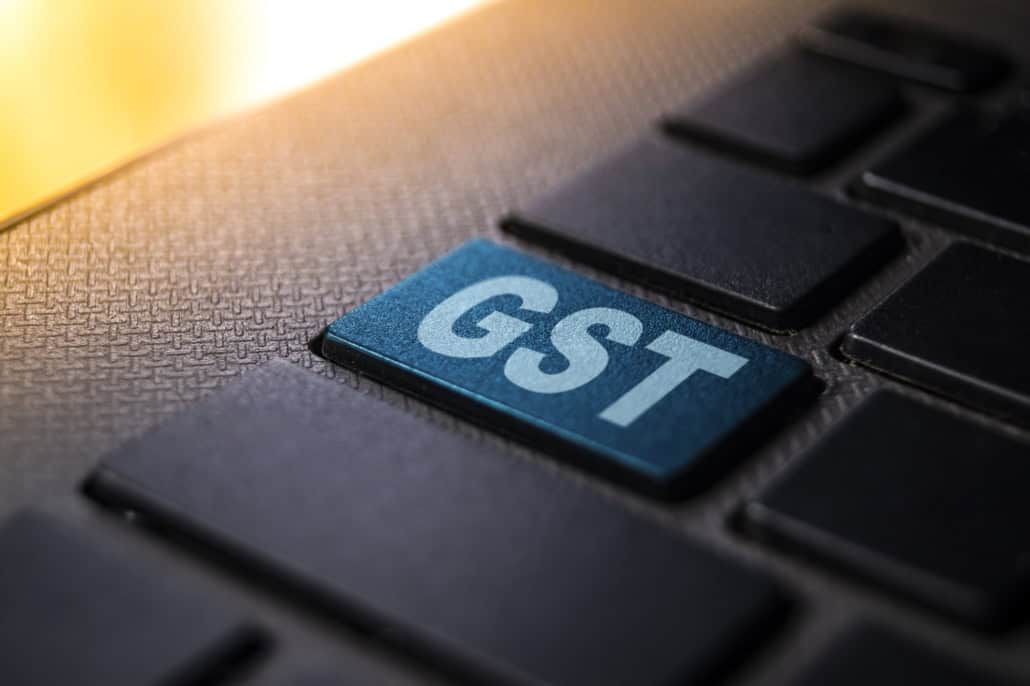June tax news: The federal housing plan, CRA information demands–and more

THE FEDERAL GOVERNMENT’S HOUSING PLAN
The Liberal government’s Budget of April 16, 2024 (budget.canada.ca) has committed billions of dollars to support building new housing, recognizing that the shortage of housing in Canada has become a serious crisis, and hoping to get almost 4 million new homes built over the next 7 years.
Some of the measures proposed are not tax measures. They include, among others:
- reallocating land owned by the federal government for building homes, including Canada Post properties, National Defence properties, underused federal offices, and other public lands;
- construction loans offering low-cost financing to builders of new apartment buildings;
- scaling up modular housing, to make it easier to build during the winter;
- a “housing design catalogue” with pre-approved blueprints to speed up construction of modular housing, row housing, fourplexes, sixplexes and accessory dwelling units.
If you are involved in building or owning apartment, or are looking to buy your first home, there are also some tax measures to be aware of:
- For rental housing whose construction begins after April 16, 2024, the capital cost allowance (tax depreciation) rate is increased from 4% to 10% of the declining balance every year, This will allow faster writeoff of construction costs, and will thus lower the after-tax cost of building or buying a new apartment building for rental.
- The Home Buyers’ Plan, which allows you to borrow funds from your RRSP to buy a home (if neither you nor your spouse has owned a home in the past 4 years), will be increased from $35,000 to $60,000. As well, you will be able to spread the repayment of the loan back to your RRSP over 18 years instead of 15 years. The HBP is in addition to the recently introduced First Home Savings Account, which works very much like an RRSP and allows accumulation of tax-free funds that can be used towards buying a home. (See tinyurl.com/fhsa-cra.)
- The federal government is also considering introducing a new tax on residentially zoned vacant land, to encourage building on the land. The government will launch consultations on this issue later in 2024.
CRA DEMANDS FOR INFORMATION BEING STRENGTHENED
Canada Revenue Agency (CRA) auditors have significant power to demand information from taxpayers, who can be required to provide all documents relating to their business activities and finances, and can now be required to answer questions as well. Lawyer-client privilege protects any communications with one’s lawyer (or a notary in Quebec) relating to legal advice, but aside from such privilege, taxpayers can be required to cough up vast amounts of information and data.
However, some taxpayers resist this, and the CRA over the years has had to go to the Federal Court of Canada many times to get a “compliance order”, ordering a taxpayer to provide records that the CRA had demanded and should have already provided. Even when such an order is issued, with non-compliance constituting “contempt of Court” and subjecting the taxpayer to fines and/or jail time, some taxpayers have still not complied. The reported case law in this area includes some cases with extensive legal wrangling that goes on for years, as taxpayers try to keep certain details of their affairs, including trusts, corporations and partnerships, out of the CRA’s hands.
The April 16, 2024 federal Budget includes proposals regarding “non-compliance” that will give the CRA powerful new tools to get such information.
First, if the taxpayer doesn’t comply with CRA demands and the CRA has to get a “compliance order” from the Federal Court, that will automatically trigger a penalty of 10% of the taxpayer’s aggregate tax payable for each year under audit, provided that the particular year’s tax payable was in excess of $50,000. The penalty will apply even if the taxpayer complies immediately with the compliance order. It will also apply, as currently proposed, to all of the tax payable for each year, not just the tax that was still owing or tax that the audit uncovers. So, it will be a severe penalty in many cases. CRA audit demands often cover 5‑10 years or more; imagine being subjected to an extra tax of 10% of the tax already paid for each of those years.
Second, the CRA will be able to send a recalcitrant taxpayer a “Notice of Non-Compliance”. (This will be an earlier stage than seeking a Federal Court compliance order.) If the taxpayer still does not comply with the demand for information, this notice will trigger a penalty of $50 per day, up to a maximum of $25,000 (after 500 days).
The Budget proposes other strengthening of CRA’s administrative powers as well, including the ability to demand that a taxpayer provide answers “under oath or affirmation”. The advantage to CRA of this is that lying to the CRA then constitutes perjury, which is a criminal offence under the Criminal Code.
All penalties and fines are non-deductible, by the way, even if the cost is incurred for business purposes.

SPOUSAL SUPPORT — PAYMENTS TO THIRD PARTIES
Spousal support payments are normally deductible if they meet certain conditions, such as being required under a Court Order or written separation agreement, and being “periodic” payments. They must also be made to the spouse (or ex-spouse) in a way that that person has discretion over how to use the funds. Generally, the same conditions that allow a support payment to be deducted mean that it will be included in the recipient’s income.
In limited cases, payments to third parties can qualify for deduction or tax credit. Possible ways for such payments to be deductible are as follows:
- The payor is directed by the recipient to pay a third party, so that the recipient is still considered to have “discretion” as to the use of the funds. Thus, for example, where a wife directed that her husband make cheques payable to her landlord for rent and he delivered the cheques to her, theywere held to qualify since she retained discretion over the use of the funds (Arsenault, Federal Court of Appeal, 1996 CanLII 19792).
- Where the Court Order or agreement provides for periodic payment of an amount that would otherwise qualify for deductibility as spousal support, and provides for it to be “for the benefit of” the recipient and/or that person’s children who are living with them, the payment is deemed to be a payment to the recipient (Income Tax Act subsection 60.1(1)). This rule can allow certain payments to third parties to qualify, though the recipient may still need to have discretion over how the funds are used.
- Where the Court Order or agreement specifies the particular third-party expense, and specifically states that it is to be deductible under Income Tax Act subsection 60.1(2) and included in the other person’s income under subsection 56.1(2), it can be deductible. There are certain restrictions. For example, it can include mortgage payments, but only 1/5 of the original principal is deductible in any one year. It cannot be for the cost of acquiring any tangible property (unless for medical or educational purposes). It cannot be related to the cost of a home in which the payor resides.
As you can see, these rules are complex. Separated or divorced couples should always get professional advice when setting up any payment arrangements, so that they are clear on the tax consequences. Disputes over support payments are a matter that has frequently ended up in the Tax Court of Canada, most often with an ex-husband claiming deductibility and an ex-wife who does not want to be taxed on the income.

CHARGING GST OR HST ON DISBURSEMENTS
Are you in a business or profession where you charge disbursements or expenses to your clients? If so, you need to understand how to treat the GST and HST. Otherwise, you can easily end up with a costly GST/HST assessment — or you could be cheating your clients!
(We assume you understand the basics of the GST/HST. As a business, you are normally entitled to “input tax credits” (ITCs) to recover all GST or HST that you pay on your costs of doing business. These ITCs are deducted from the GST and HST you have collected or billed, when calculating “net tax” that you remit to the CRA with your GST/HST return.)
When putting disbursements on your bill to a client, you must first determine whether the disbursement was incurred “as agent” of the client. This determination is crucial, and you must be clear as to the answer before you issue your invoice.
The CRA has published Policies P-209R, “Lawyers’ Disbursements”, and P-182R, “Agency”, to help with this determination (they are available on cra.gc.ca), as well as Info Sheet GI-197. For example:
- Travel expenses, postage, telephone, couriers and photocopying are not normally incurred as “agent”. They are your own expenses and are inputs to (part of the cost of) the services you provide.
- Paying an expense which is really the client’s own expense is a payment made as “agent”. For example, when a lawyer pays land transfer tax on behalf of a client who is purchasing a home, that payment is made as the client’s agent.
In the 2010 Merchant Law Group decision (2010 FCA 206), the Federal Court of Appeal upheld the CRA’s approach to the GST/HST disbursements but set the determination of “agent” differently: expenses incurred as agent are those where the client is explicitly liable to the third party to pay the fee (paragraph 25). The exact parameters of this rule have yet to be determined.
If the expense is not incurred as agent
An expense that is not incurred as an agent (e.g., travel) is considered an input to your services. You should claim any input tax credit yourself on such an expense. You then bill the pre-GST/HST amount of the expense as a disbursement, added to your fee before charging GST or HST. If you charge GST/HST on your services, you then charge the tax on the total including the (pre-GST/HST) disbursement.
EXAMPLE
You travel on a client matter and pay a Calgary hotel bill of $100 plus $5 GST. You want to have the client reimburse you. You are charging $1,000 to the client for your work. The client is in Alberta, so you are charging 5% GST rather than HST.
You should claim the $5 GST as an input tax credit on your own GST/HST return, and record the disbursement as $100, not $105.
You then bill the client as follows:
Fees $1,000.00
Disbursements: hotel $100.00
Subtotal $1,100.00
GST @ 5% $55.00
Total $1,155.00
The net result may appear to be the same as simply charging $105 to the client as the disbursement (in addition to your fee of $1,000 plus $50 GST), and not adding GST to the disbursement. However, if you do that, the CRA can assess you for not collecting GST on the disbursement! (You may or may not be able to claim the offsetting input tax credit if that happens.)
Note also that, with this method, taxable disbursements can become non-taxable or taxable at a different rate, and non-taxable disbursements can become taxable. What matters is the GST or HST status of your fees, not what rate of tax you paid on the expense you incurred.
Thus, suppose in the above example you are billing a non-resident client and not charging GST on your services. Your subtotal would still be $1,100, with no GST on top, for a total bill to the client of $1,100. Meanwhile, you have properly claimed the $5 input tax credit. As a result, no net GST applies to the hotel bill you paid. The $100 hotel bill is included in your disbursements and the client does not pay GST on it.
Conversely, suppose your client is in Ontario, so you charge the client 13% HST on your services. Your subtotal would again be $1,100, but 13% HST applies to the entire amount. As a result, the Calgary hotel bill (originally $100 + $5 GST) is rebilled by you as $100 plus $13 HST. Since the hotel bill was an input to your services, not an expense you incurred as agent of your client, this is the correct result. The client effectively pays $113 for your hotel stay. (If the client is a business claiming input tax credits, it will claim a credit for the $13, along with the HST in your fees.)
If the expense is incurred as agent
An expense that is incurred as agent is simply a “pass through”. You show it on your invoice after all GST/HST is calculated, and you include whatever GST or HST was on the expense — or nothing if there was none. You do not claim an input tax credit for the GST or HST charged on the expense, because you did not incur the expense — you simply paid it as your client’s agent. You also do not add GST or HST to the disbursement. The client pays whatever GST or HST was originally charged. In effect, it’s as though you weren’t in the picture and the client incurred the expense directly.
Thus, for expenses incurred as agent, the original GST/HST status is preserved and passed through to the client.
Conclusion
This is a tricky area, and many businesses and professionals get it wrong. Yet if you do not properly comply, you expose yourself to assessment for up to four years of past GST/HST, plus interest, on all your disbursements. And if you mistakenly charge GST or HST on a disbursement when you should not be, or charge GST or HST on top of a tax-included amount, then you are cheating your clients.
If you have been reporting GST/HST on disbursements incorrectly in the past, it may be possible to eliminate any net cost by way of a Voluntary Disclosure. This is best done with the assistance of a knowledgeable tax professional.

DO YOU MAKE DONATIONS TO U.S. CHARITIES?
Do you make donations to charities located in the United States? They may be eligible for a tax credit on your Canadian tax return in one of several ways.
First, donations to many foreign universities qualify as charitable donations in Canada. The institution must be listed in the CRA’s list of qualifying universities (tinyurl.com/univs-cra), which lists universities that are known to have significant numbers of Canadian students and that have applied to be on the list. There are 558 U.S. institutions listed (and others in other countries). The list runs alphabetically from Abilene Christian University (Abilene, Texas) to Zaytuna College (Berkeley, CA), and includes virtually every important U.S. university and college.
(The CRA has a measure of control over foreign universities for purposes of Canadian donations. If the CRA determines that a foreign university is not complying with the requirements as to how the funds should be used, the CRA can “de-register” the university and it will no longer qualify for donations.)
Second, a donation to any other U.S. charity will generally qualify for Canadian credit if you have U.S.-source income. This rule is found in Article XXI, paragraph 6 of the Canada-U.S. tax treaty. The charity must be one that “could qualify in Canada as a registered charity if it were a resident of Canada”. Donations can be claimed for up to 3/4 of your “income arising in the United States”. This could include business income from U.S. clients, or investment income arising in the U.S. such as dividends or interest on U.S. stocks or bonds within your Canadian brokerage account. The CRA may have a more restrictive interpretation (such as requiring you to be operating a business in the U.S.), but the Courts have yet to determine the scope of this rule.
The CRA has stated that any organization that qualifies under section 501(c)(3) of the U.S. Internal Revenue Code will qualify for this relief. If you want to know whether a particular organization you are donating to qualifies under section 501(c)(3), you can search for it on www.guidestar.org.
Third, some foreign charities have a “Canadian Friends of…” or similarly-named organization in Canada, which is registered as a Canadian charity. The “Canadian Friends” can receive donations and use them for projects that benefit the foreign charity and will issue you a Canadian tax receipt which you can use on your Canadian tax return like any other Canadian charitable donation. If you are considering a donation to a U.S. charity and cannot obtain Canadian tax relief under either of the first two ways, ask the charity if it has a parallel Canadian charity that can accept donations for it, or check the CRA web site at tinyurl.com/list-cra-charities.
Fourth, if you live near the border and commute to a place of employment or business in the U.S., and that is your chief source of income from the year, then you can treat donations to U.S. charities as though they were to Canadian charities. This rule is found in subsection 118.1(9) of the Income Tax Act.
GARNISHMENT NOTICES
The Canada Revenue Agency (CRA) has various weapons at its disposal when trying to collect money from a person who has a tax debt, whether income tax or GST/HST.
One of these weapons is the Garnishment notice, also known as a “Requirement to Pay” or a Third-Party Garnishment. This can be issued under section 224 of the Income Tax Act or, for GST/HST debts, under section 317 of the Excise Tax Act.
If you receive a garnishment notice referring to one of these sections, and you are liable to pay any money to the tax debtor, then you must pay that amount of money (up to the limit of the tax debt listed in the garnishment notice) to the CRA. If you do not, you can be assessed by the CRA for that amount of money.
Most people understand that they must pay the CRA rather than paying the tax debtor. What is often not understood, however, is that the person who receives the notice will be liable even if they do not pay anything to the tax debtor, provided a liability to pay the tax debtor exists.
This has happened in several reported Court cases. Even though the person who received the garnishment notice paid nothing to the tax debtor, they were liable to pay the CRA because they owed money to the tax debtor.
So, if you receive a garnishment notice, you cannot avoid liability to the CRA by simply not paying anything further to the tax debtor! If the debt exists, you must pay the CRA or face an assessment. And if you’re assessed, the CRA can then seize the money from your bank account or from anyone who owes money to you.

AROUND THE COURTS
Caring for foster children was taxable
Paragraph 81(1)(h) of the Income Tax Act provides an exemption for social assistance payments made through a government program for foster care of children in one’s home.
In the recent case of Brereton v. The King (2024 TCC 41), Mr. Brereton earned income from caring for children as a subcontractor. He claimed the BC government had told him the income was exempt. However, the CRA assessed him for tax on the income, and he appealed to the Tax Court of Canada.
The Court dismissed the appeal, ruling that the income was taxable, since Mr. Brereton was working at other properties, not caring for children in his own home. It did not matter if he had received different information from the BC (or any other) government; tax applies based on the law, and incorrect information — even if given by the CRA — does not change how tax applies.
***
This letter summarizes recent tax developments and tax planning opportunities; however, we recommend that you consult with an expert before embarking on any of the suggestions contained in this letter, which are appropriate to your own specific requirements. For assistance with your tax planning and accounting needs, contact a member of our team.


